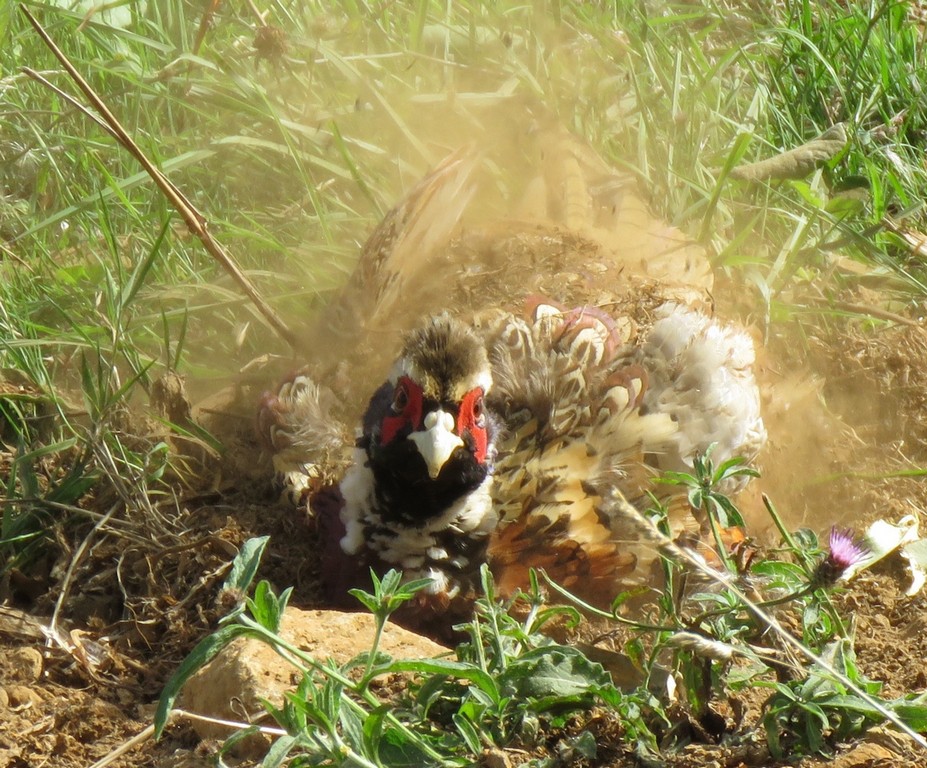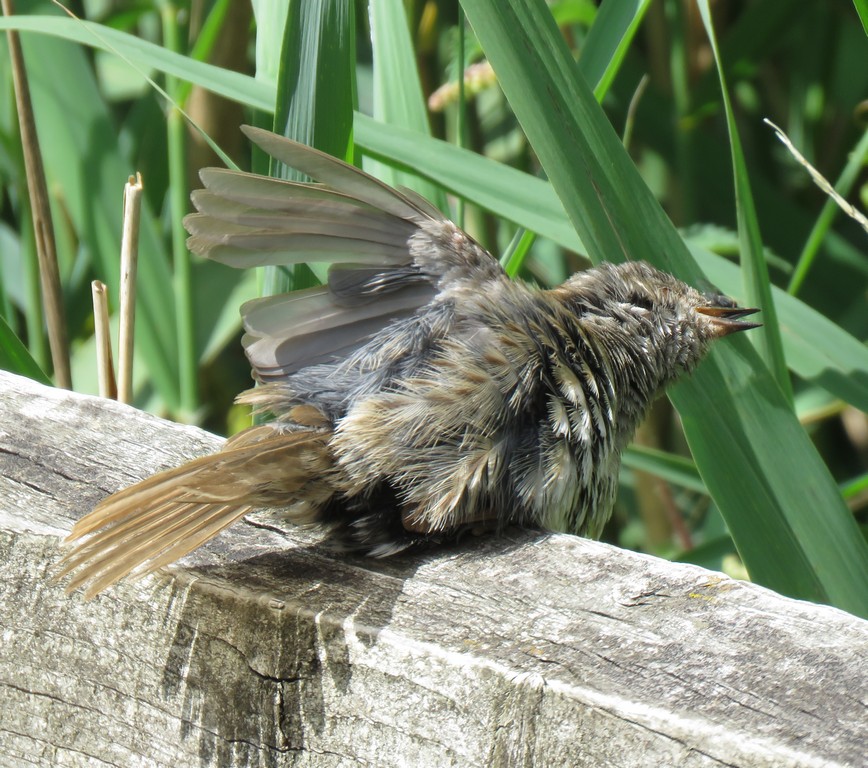Nature Notes – Sept 2025
Summer Update – Feather Care
As nature is seasonal, the Chronicle summer recess means that some aspects of the natural year don’t get much coverage. In birds, feather care and moult occurs throughout the year but late summer is a peak period of activity.
Feather Care

Feather care is even more important to birds than hair care is to humans. We can’t fly with or without a good head of hair; birds can’t fly if their feathers don’t work. On-going care involves ‘preening’; using the beak to remove loose or broken feathers and then to apply oil from the preen gland at the base of the tail. This protects the feathers and keeps the bird looking smart. Other aspects of feather care include a vigorous wash; a process you will have observed if you have a bird bath or pond in your garden. For some species, bare patches of earth are used by birds to indulge in dust-bathing. This is a good way to remove parasites, especially those that damage feathers or suck blood from the bird’s skin. You may have seen sparrows or starlings dust-bathing in your garden. Recently a male pheasant chose to do this in front of one of the hides at Rutland Water throwing up clouds of dust, as illustrated in the photograph.
Moult
This is a very complex issue, not least because there is considerable variation in how and when birds moult. The complexities are not only between species but sometimes between individual birds in a given species. The basic issues are:
- The need for nestlings to replace downy feathers that keep them warm in nests with feathers strong enough to enable them to fly
- For older birds to regularly replace all of their feathers because of general wear and tear; especially following the exhausting period when nestlings are being fed.
Timing is crucial
Strategies and timings vary but as a general rule feather replacement is best done when birds can be relatively inactive. For example many duck species replace their wing feathers in summer, immediately after the breeding season. They grow a set of drab feathers so that they can hide from predators. As these feathers wear, the full colours of, say, a breeding mallard, appear as if by magic in the autumn. Many adult migrant birds grow new flight feathers ready for their autumn flight to Africa but in other species the main moult period is in warmer, insect-rich, climates in readiness for the return flight to Europe. On-going, partial moult is another strategy. If you look carefully at red kites and buzzards in late summer you will notice symmetrical gaps in their wings as they shed the same primary feather(s) on each wing to keep them flying on an even keel.
Whatever strategies are employed, birds will always be at their finest and fittest at the start of their breeding season but may look ragged and worn after raising a family (does that ring any bells?).

The second picture this month is a dunnock. This bird was moulting its body feathers and showing considerable wear and tear. It was also gradually replacing its wing feathers. The outer five are new and the sixth and seventh are beginning to grow. It had found a warm fence in the full sun and was sun-bathing as part of the restorative process. This followed weeks of crashing through dense vegetation, carrying food to hungry youngsters. It was enjoying its sun-bathing so much that it allowed us to approach it to within a couple of metres.
David Scott




 Midland Main Line New
Midland Main Line New

